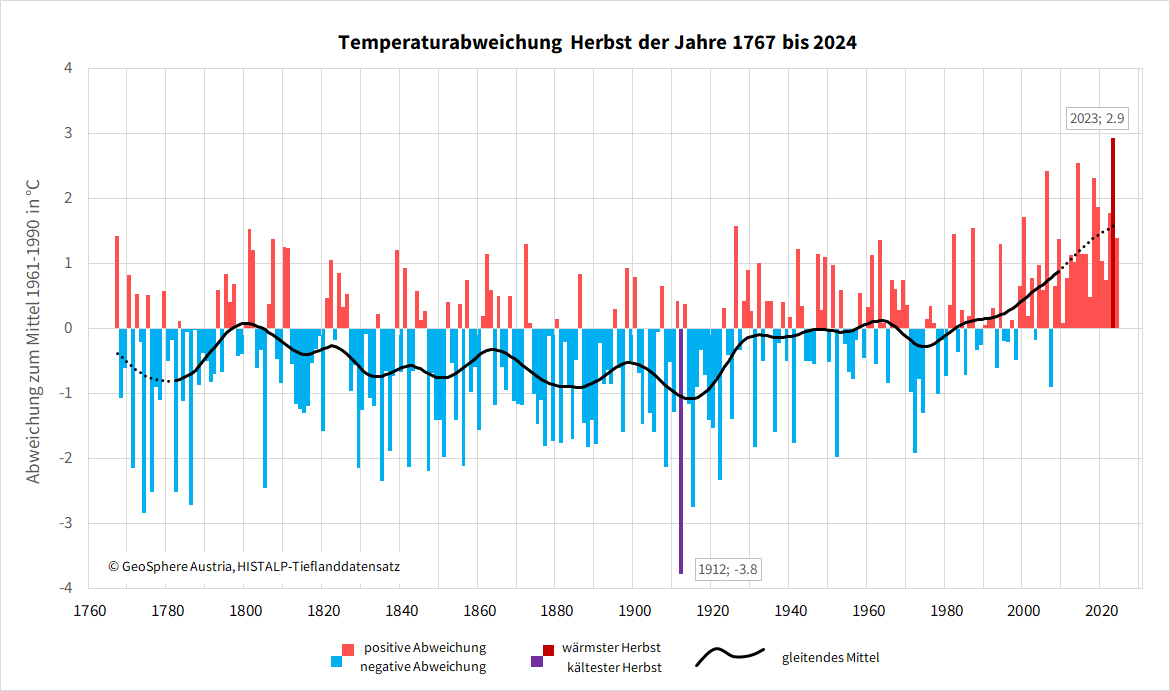Very mild autumn 2024
Preliminary autumn results from GeoSphere Austria: 13th place in the series of the warmest autumns in recorded history in the lowlands, 14th place in the mountains
Autumn 2024 brought many very warm and few cold phases and was therefore significantly too warm overall. "In the provisional balance, autumn 2024 is 0.7 degrees above the average for the 1991 to 2020 climate period in Austria's lowlands and 1.1 degrees above the average for the summit regions," says climatologist Alexander Orlik from GeoSphere Austria, "which puts us in 13th place in the series of the warmest autumns in the 258-year measurement history in the lowlands and 14th place in the 174-year mountain measurement series in the mountains."
Compared to the 1961-1990 climate period, autumn 2024 was 1.4 degrees above average in the lowlands and 1.6 degrees above average in the mountains.
On some days, the temperatures were even in the record range. On 3 September, for example, the Austria-wide September and autumn record of 35.9 degrees in Bad Deutsch-Altenburg was only just missed (36.0 degrees in September 2015 in Pottschach, N). At 7.1 degrees on 1 November, the Sonnblick recorded the highest November temperature since measurements began here in 1886.
The amount of precipitation in autumn 2024 was 45 percent above average in the Austria-wide evaluation. The main reason for this was the extreme rainfall in September, as October was average and November very dry.
The record rainfall in September in the east and north of Austria also resulted in individual records in the precipitation balance for the entire autumn. In Lower Austria, for example, Langenlebarn set a new autumn record with around 520 millimetres of precipitation (old record 225 millimetres in autumn 2007, St. Pölten with around 510 millimetres (old record 355 millimetres in autumn 1950) and Zwettl with around 320 millimetres (old record 274 millimetres in autumn 1922).
Winter gradually returned to the high mountains in autumn 2024. Some cold air intrusions also caused snowfall down to low altitudes. Over the entire autumn, however, the number of days with snow cover was below average. At altitudes between 1000 and 2500 metres above sea level, for example, there were 15 to 30 percent fewer days with snow cover than the long-term average.
The number of hours of sunshine in autumn was pretty much in line with the average (+2%). September and October were relatively cloudy and November was sunnier than average.
Translated with DeepL.com (free version)

